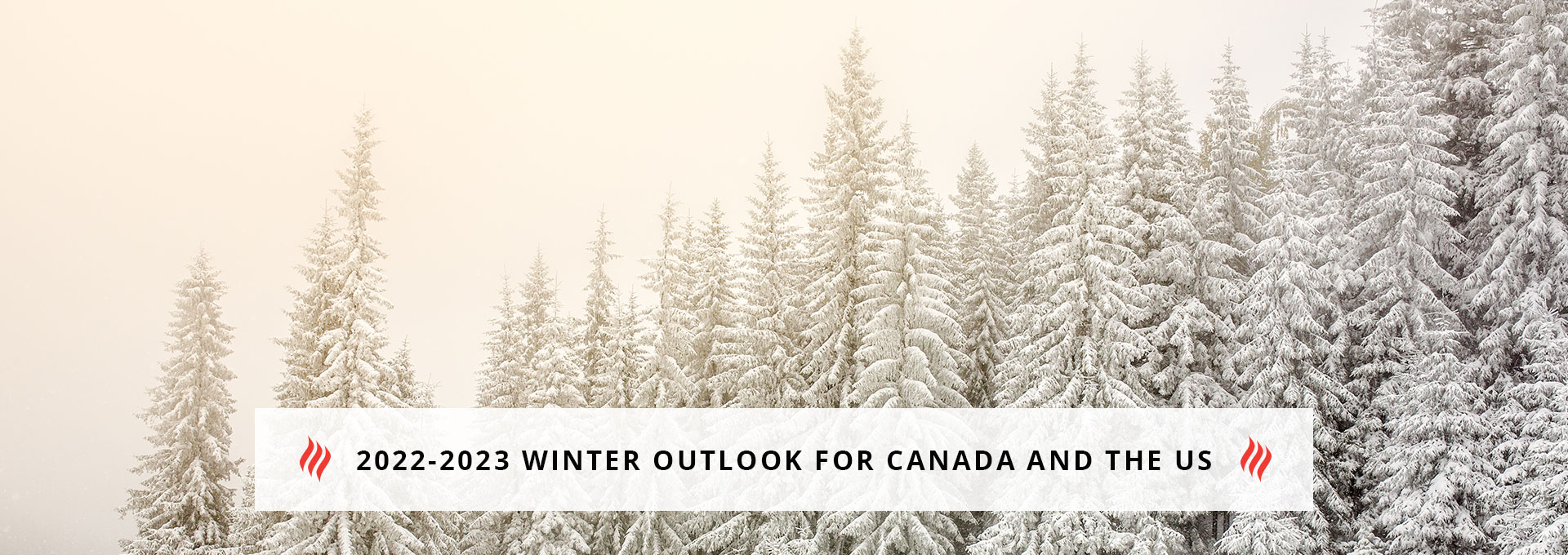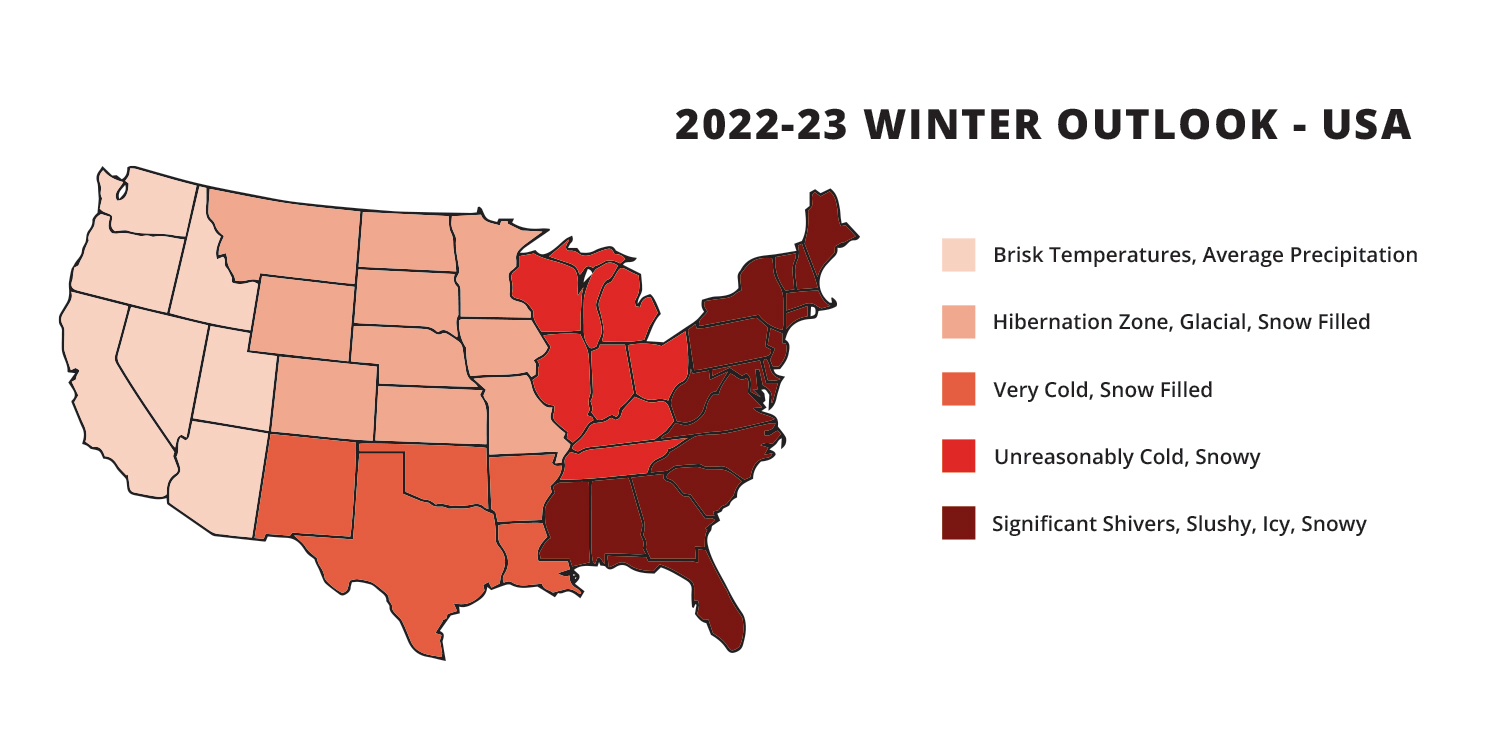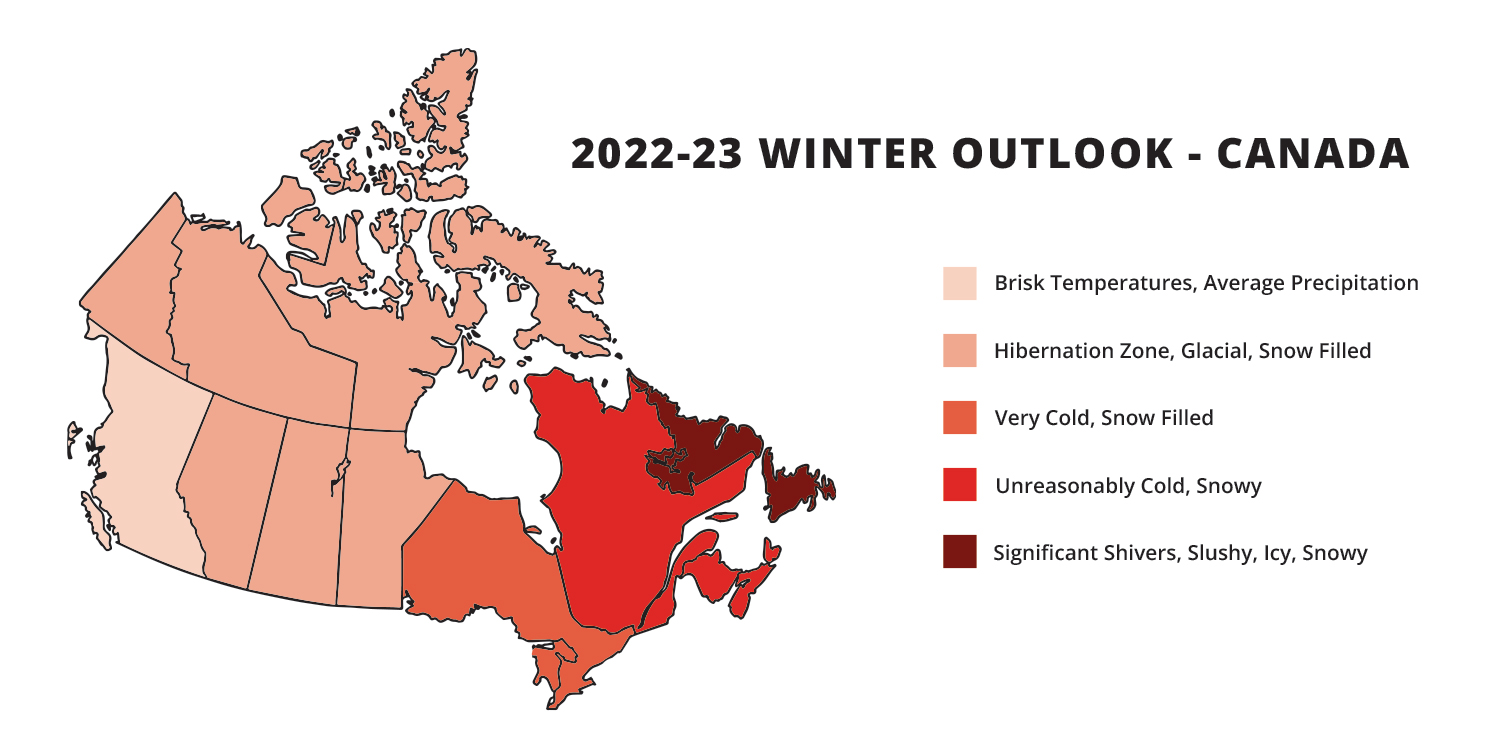
Winter is Coming – How the Farmers' Almanac and Regency Can Help You Prepare
What is the Farmers’ Almanac?
Published every year since 1818, the Farmers’ Almanac is North America’s most timeless, trusted, and treasured source for long-range weather predictions. Each edition contains informative articles, helpful planning calendars, fun facts, and valuable advice on gardening, cooking, fishing, conservation, and much more. The Farmers’ Almanac and Canadian Farmers’ Almanac are sold in supermarkets, drugstores, bookstores, and retail outlets throughout North America, as well as online.
The Farmers’ Almanac has been using the same formula for over 200 years. The Farmers’ Almanac forecaster, Caleb Weatherbee; a pseudonym the Farmers’ Almanac uses for all of its weather forecasters, uses a top-secret mathematical and astronomical formula, taking sunspot activity, tidal action, the position of the planet, and other factors into consideration. Their readers claim they are accurate about 85% of the time.
Fireplaces Keep You Warm
With cold weather approaching, you’ll be looking for ways to keep warm and toasty. Fireplaces are a great option help heat your home this winter season. With the many options available, you’re sure to find the fireplace that works for you. The classic wood stove, the traditional gas fireplace and even the modern electric fireplace are all great solutions to your heating needs this season. Not sure what fireplace you need?
Find Your Flame to quickly guide you to the fireplace product that is best suited for your application and your home!
2022-2023 Winter Outlook for the US

Buckle up because 2022/2023 is going to be COLD! According to the Farmers’ Almanac 2022-2023 Extended US Weather Forecast, this winter season will have plenty of snow, rain, and mush with some record-breaking cold temperatures.
Winter 2022-2023 is expected to be subject to an active storm track in the eastern half of the country, running from the western Gulf of Mexico to the northeast, across the Virginias, and across interior New York State and New England.
Southeast
The Southeast will see frequent storms delivering a mix of wet snow, sleet, ice, freezing rain, and chilly temperatures.
North Central
The North Central States will see a fair share of storminess during the winter season, which should mean plenty of snow.
South Central
The South Central States are forecast to see some accumulating snow, especially in early January. The Far West and the Pacific Northwest will see about-normal winter precipitation; however, the Southwest will experience less than normal.
Winter will feel unreasonably cold for people Great Lakes region, especially in January.
Farther south, into the Southern Plains, temperatures will average chillier than normal.
The Pacific Northwest will see brisk/cool conditions, and the Southwest will be the mild area of the country, with near-normal winter temperatures.
Source:
Farmers' Almanac Extended Forecast
2022-2023 Winter Outlook for Canada

Get your snow suits ready because according to the Farmers’ Almanac 2022-2023 Extended Canada Weather Forecast, the winter season will be stormy for most areas. An active storm track will travel across eastern North America, running from the western Gulf of Mexico to the northeast—across the New England region of the US and up into the Maritime Provinces.
Maritimes
The Maritimes will see a good number of cold rains and storms filled with snow, sleet, ice, and rain. Areas north and west of this active track—Labrador, Newfoundland, Quebec, Ontario, and the Great Lakes will see winter’s precipitation fall as snow, and sometimes a lot of it.
Prairies
The Prairie Provinces will be hit the hardest this year with tons of snow in both January and February.
British Columbia
British Columbia should see average amount of winter precipitation, but with brisk temperatures.
Central and Eastern Canada
A decent amount of snow is expected in Ontario, Quebec and the Prairie Provinces for the last half of January.
In February, especially for Eastern areas, there is a possible Nor’easter that may drop as much as 30-60 centimeters (12-24 inches) of snow in some areas just after Groundhog’s Day.
During the month of January, Canadians may see one of the coldest arctic outbreaks in recent years.
Source:
Farmers' Almanac Canadian Forecast
How Weather Affects the Fireplace Industry
According to
Industry Arc, in cold weather countries such as the United States, Canada, France, Germany and others, fireplaces increase in demand and are installed in the majority of housing facilities. The market growth in these regions is largely rising due to United States, Greenland, North Canada and others which has the highest installed hearth for commercial as well as residential end use comprising of both modern and traditional hearths. North America followed closely by Europe, is expected to hold a prominent place in the global hearth market owing to the exponential growth of the region because of the increase in use of several types of heating appliances in the houses due to extreme cold weather. Cold climate and the increasing interest among people towards hearth products related to home decoration is driving the growth in the global hearth market.
Why Purchase or Upgrade a Fireplace?
Fireplaces are the #1 most sought after feature of a home. Therefore, it stands to reason that the money spent to install a new fireplace will be returned at a later date whenever you choose to sell. Money spent on a fireplace is a fantastic way to not only add warmth and comfort to your home but also
long term value, even more so if you are adding a second or third fireplace to your bedroom or bathroom! Less than 15% of new homes in the US have two or more fireplaces and according to the National Association of Realtors (NAR) each additional fireplace can increase asking price by as much as 12% in certain areas!
While modern home hearths are attractive and seen as a place to gather, as weather events increasingly cause power interruptions, homeowners also recognize their practical value. Designed to work without electricity, thousands of families across North America rely on Regency fireplaces, stoves & inserts to stay warm during winter storm seasons.